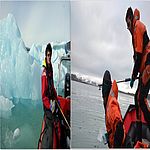Our process studies focus on laboratory or field based manipulations of ocean waters in order to unpick the influence of biological and geochemical factors driving the observed distributions of carbon, nutrients and trace elements. We examine how marine microbes (phytoplankton and bacteria), and geochemistry (pH, particles such as atmospheric dust) influence the abundance and cycling of nutrients and trace elements and thus in turn, how nutrients and trace elements influence carbon cycling.
1. Ocean Food-web Patrol – Climate Effects: Reducing Targeted Uncertainties with an Interactive Network (Ocean Certain EU FP7)
2. Mesocosms



